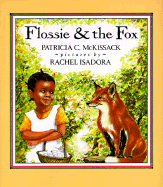Flossie and the Fox

 |
 |
 |
|---|---|---|
     |
Sensitivity |      |
     |
Judgment |      |
     |
Focus |      |
     |
Action |      |
by Patricia McKissack
Flossie and the Fox is about prudence, a series of events, and imagination. The genre of the story is Mythology/folktale, the setting is Historical and Fantasy.
Flossie, a young girl, doesn't show fear of a fox when she meets one for the first time. She says she doesn't believe he is a fox so the fox keeps trying to convince her until she finally reaches home, safely.
The theme of the story is Even the slyest of creatures can be outsmarted.
 |
Violence |
 |
Cruelty |
 |
Rudeness |
 |
Religion/Spirituality |
 |
Stereotypes There is stereotyped levels of intelligence, stereotyped social class, and stereotyped culture/race/ethnicity/nationality in the story. |
Key Virtues
- Resourceful
- Creativity
- Wisdom
- Courage
- Self confidence
- Persistence
- Duty
- Hard work
- Helpfulness
- Moderation/Temperance
Key Vices
- Arrogance
- Anger
- Bragging
- Foolishness
- Untrustworthy
- Contempt
- Greed
- Vanity
The 4 Component Model
- Ethical Sensitivity - Evidence of concern for others and awareness of the consequences of one's actions.
- Ethical Judgment - Shows characters deliberating about ethical choices.
- Ethical Focus - Addresses the ethical demand in the situation, prioritizing moral goals and responsibilities over selfish interests.
- Ethical Action - Has a character who takes several steps to reach a moral goal and perseveres to complete the ethical action.